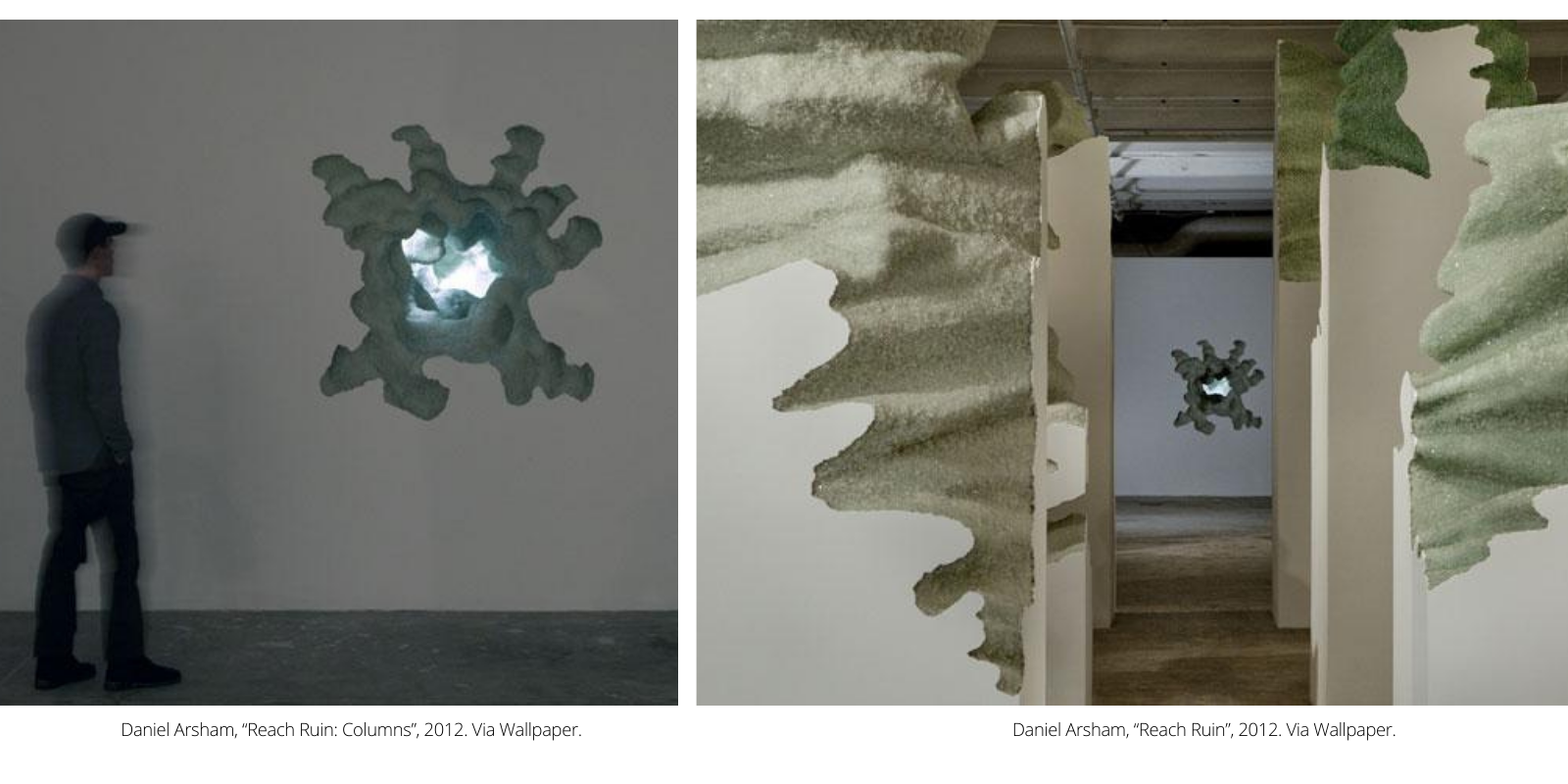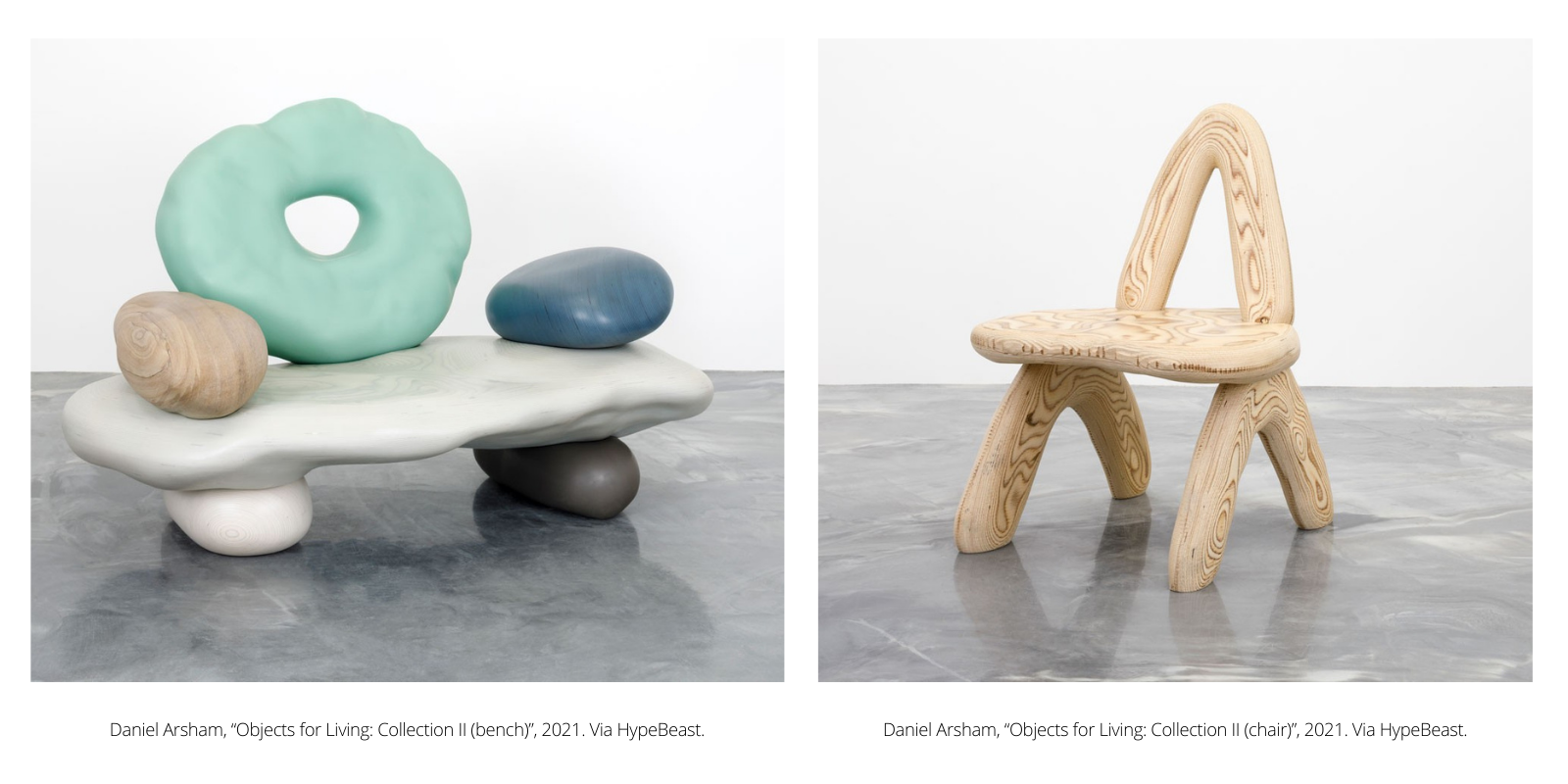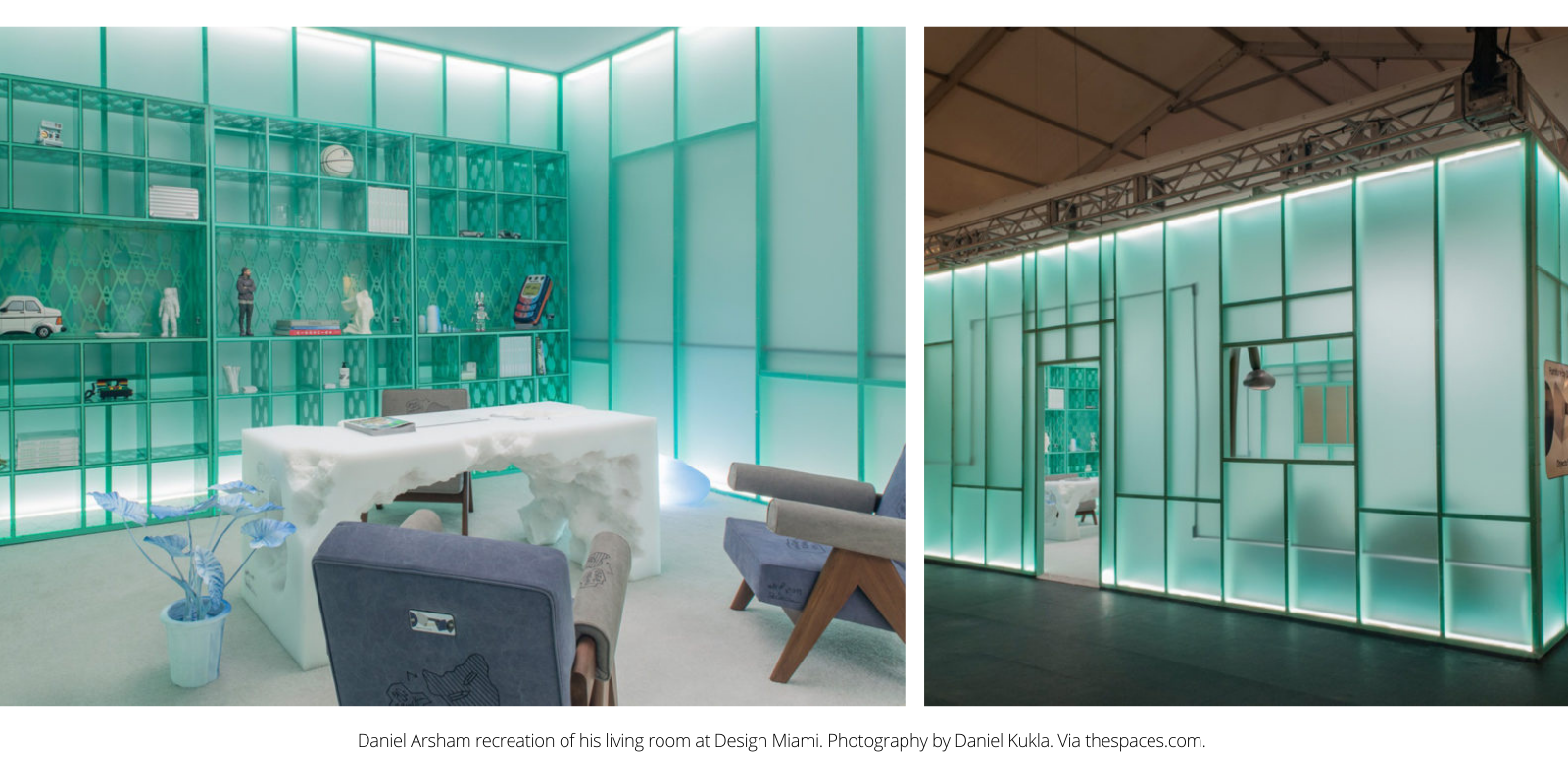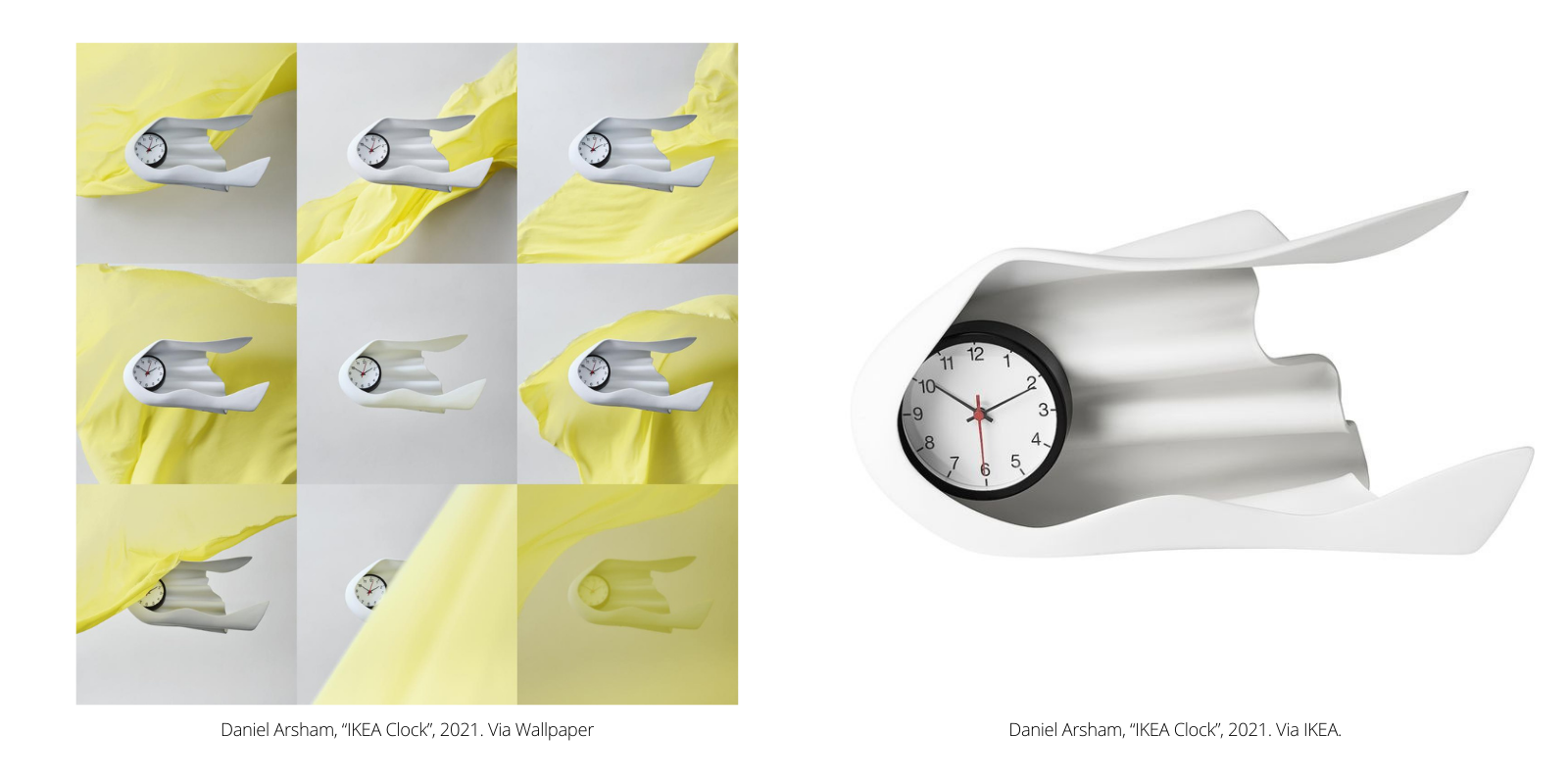Unearthing Daniel Arsham
At first glance, you might think Daniel Arsham’s minimalist yet trendy appearance resembles what Steve Jobs may well have looked if he had decided to launch a street style fashion brand, instead of a tech company. However, Arsham is not a Silicon Valley tech god, but rather, he is a multidisciplinary artist specialising in what he calls ‘fictional archaeology’. And no, it’s not just you that’s wondering what that means! Arsham coined the term ‘fictional archaeology’ (2015) himself in an attempt to create a new category that defined his ground-breaking work in sculpture, architecture, drawing and film.
Although he doesn't work in Silicon Valley or design for a street style fashion house; technology and fashion both play a significant role in Arsham’s work! Arsham is best known for his sculptures of eroded modern-day artefacts including radios, telephones and cameras (which inspired his recent collaboration with the French fashion house Dior in 2020). The contemporary artefacts are moulded to look like ancient sculptures which have just been unearthed, but instead of being eroded by natural forces, Arsham frequently creates ‘artificial decay’ by using friable material like ash and crystal embellishments. The result is a surprising combination of ancient-looking aesthetics twinned with instantly recognisable contemporary brands and objects (such as the Dior clock pictured below!)

“I have been making works for many years that replicate objects from our present as if they were uncovered on some future archaeological site. These objects create breaks in time and they expand and collapse it by bringing us outside of our current moment.”
- Arsham, 2019
Arsham’s interest in architecture and design started at a young age. In fact, facets of his work originate from witnessing the destruction of his home in Florida by hurricane Andrew when he was just 12 years old (which undoubtedly still heavily influences Arsham’s practice today). The 2012 exhibition ‘Reach Ruin’ (an anagram for Hurricane) took the scenes which Arsham saw as a child - shattered glass, flashing lights and destroyed drywall - and gave these broken materials a new life and purpose beyond their original perception as solely ‘debris’. It also ignited Arsham’s fascination with the themes of nature and decay, which are present throughout all of his work.

Another childhood disposition which affects Arsham’s artwork is the fact that he is colour-blind. Until recently, he could only see about 20 percent of the colours that the average person can. This perhaps explains why much of his work features quite monotonous muted colours. However, in 2015, developments in technology meant that Arsham was able to receive a pair of glasses which partially corrected his colour-blindness. Being able to experience a broader range of shades seems to have inspired Arsham to introduce ‘new’ colours, such as green and red, into his work. For example in 2016, his first solo show at Galerie Perottin saw him use brightly saturated shades of blue and violet to create casts of basketballs. However, although you might think that, especially for an artist, seeing a full range of colours after many years without it would completely alter their practice...but this isn’t the case for Arsham. He has tended to keep faithful to his original monochromatic style, just with a few brighter hues!
Another event which altered Arsham’s artistic method was when the Covid-19 pandemic resulted in him (along with most of the world) being stuck at home for an extended period of time. With limited access to his studio, materials and tools; he began to improvise. Using his son's Play-Doh©, Arsham started creating his latest series Objects for Living: Collection II.The series consists of hand-sculpted furniture that is softer and more rounded than his previous work. Instead of fissures and cracks the ‘faults’ from this series lie within the indentations and slight imperfections that come from sculpting in a soft material like Play-Doh©. So...remember to think twice before tossing out any sculptures that your children make – they could be a Daniel Arsham in the making!

The pandemic changed lots of things for a lot of people but its impact became notorious in Daniel Arsham’s practice and the kind of work we are seeing him produce today. Lately, Arsham has been spending more time creating functional, but highly fashionable, furniture. This is not a shift in his practice though! As mentioned earlier, Arsham has always been inclined to work with an architectural focus, and furniture is no different. Yet, this inclination to work with furniture seems more intimate, we may say. Perhaps a direct consequence of spending an increased amount of time at home? Arsham’s furniture, (much like most furniture), is designed with a purpose in mind - to be used... right?! However, the key difference to note here is that most furniture is designed with a commercial purpose, to fulfil people's needs and dreams… whilst Arsham built his furniture strictly for himself...thus with no intention to make a profit. The pandemic allowed Arsham to stop concerning himself with the economic pressures of his practice, and start creating objects purely for his own enjoyment.

However, gallerist Marc Benda noticed these furniture pieces and that’s when Arsham saw the potential to create a public collection of these more personal works. Of course, artists need to make a profit to make a living... But this reminds us that sometimes, the most beautiful (and thus often most desirable) pieces are created out of pure, innocent artistic enjoyment and creativity as we can see with Arsham’s furniture. Regardless of whether one of his pieces is for sale or not, we still value Arsham’s beliefs about art and his practice. As you may know, Arsham is very successful and his works are typically very expensive, though that’s not necessarily a reflection of how the artist wants it to be, but does seem to be a reflection of how the art market wants it to be. Arsham believes and values practicality and accessibility, meaning he wants his works to be purposeful.
“Warhol loved shopping and retail because that was people’s everyday lives, and art should live in people’s everyday lives.”
- Daniel Arsham, HypeBeast, 24th October 2019
In line with this notion of accessibility, he has recently collaborated with the Swedish flat-pack furniture giant IKEA on a clock. The clock designed by Arsham currently retails for £29 and has a sleek design which looks as though the clock has ‘escaped from the wall’, taking a sheath of the wall with it! It is very ‘Daniel Arsham’: with the minimalist black and white colour pallete contrasting the unusual almost futuristic design. The end product is understated in terms of colours yet unexpected in terms of design, and is undoubtedly a conversation starter!

“I wanted to unite art and function into something that could fit on a bedside table. It looks as if the clock has torn loose and taken a piece of the wall with it. Like a frozen moment. Art is a universal language that can speak to everyone, and I like the idea that my art can reach many people in this way.”
- Arsham on the IKEA collaboration, 2021
Arsham often references everyday objects, but encourages us to look at them differently. Instead of covering up any imperfections they might have, he purposefully highlights and embellishes them. And by using history and imitating the look of old artefacts through the white-wash and crumbling surfaces, he makes us question when everyday objects (such as our clothing, keyboards and cars) that surround us today, will become artefacts; and ultimately become these ‘future relics’.
It’s hard to summarise an artist’s career when they are always experimenting with new mediums and techniques but that is precisely what makes Arsham such an exciting figure to follow. Despite his unique style and practice, he is never afraid to experiment. He is already prolific and we can’t help but wonder: what will Arsham get up to next?









